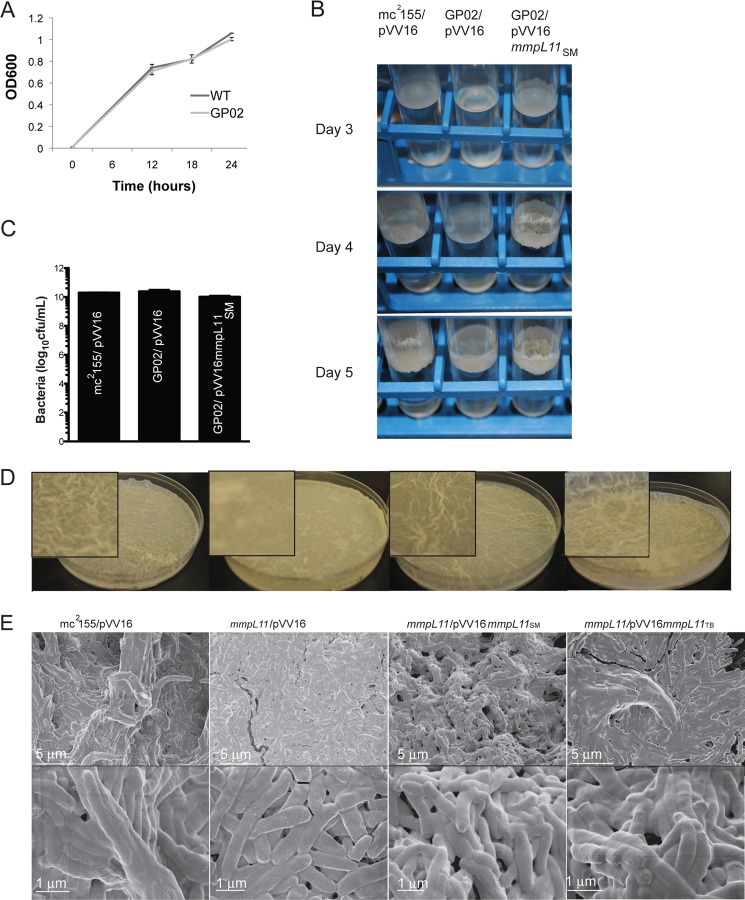FIGURE 1.
The M. smegmatis mmpL11 mutant grows like the wild type in planktonic cultures but demonstrates impaired biofilm formation. A, growth of wild-type M. smegmatis and the mmpL11 mutant GP02 in complete 7H9 medium containing albumin/dextrose/saline supplements and 0.05% Tween 80 was followed over time. B, pellicle formation by the wild type (mc2155/pVV16), the mmpL11 mutant (GP02/pVV16), and the complemented mutant (GP02/pVV16mmpL11SM). Bacteria were subcultured in glass tubes and allowed to grow at 37 °C for 5 days without shaking. At day 3, a thin film could be observed across the surface of the medium in the wild-type and complemented strains (left). This developed into a textured biofilm over the next 2 days. Attachment of bacteria to the glass tube and growth away from the surface could be observed from the side (right). C, bacteria in pellicle cultures depicted in A were enumerated. Biofilms were disrupted mechanically via syringing, and serial dilutions were plated. The mean ± S.D. of three independent experiments is shown. There was no significant difference in cfu/ml between strains. D, biofilm formation by the wild type (mc2155/pVV16), the mmpL11 mutant (GP02/pVV16), the complemented mutant (GP02/pVV16mmpL11SM), and the heterologously complemented strain (GP02/pVV16mmpL11TB). Equivalent numbers of bacteria were subcultured in liquid biofilm medium (Sauton's medium lacking Tween 80). Plates were incubated for 4 days at 30 °C. E, scanning electron microscopy of biofilms formed by wild-type, mmpL11 mutant, and complemented strains.

